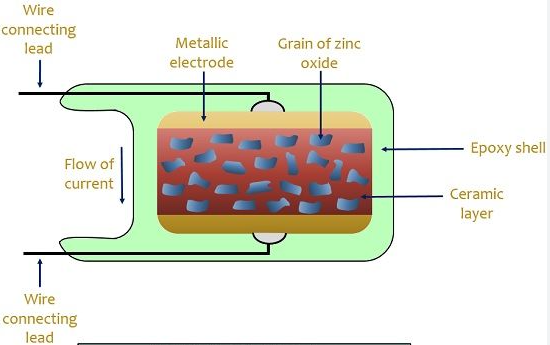
A varistor is a crucial yet often overlooked component in modern electronic devices. Its name is a portmanteau of “variable resistor,” and it serves as a voltage-dependent resistor that helps protect electronic circuits from voltage surges and transient spikes. Varistors play a pivotal role in ensuring the stability and longevity of electronic equipment, safeguarding against potential damage caused by sudden voltage fluctuations.
At its core, a varistor is a semiconductor device with a nonlinear resistance characteristic. It exhibits a high resistance at normal operating voltages but rapidly changes to a low resistance state when subjected to voltage levels above its threshold. This property makes varistors indispensable in various applications where protection against voltage disturbances is essential.
The fundamental principle behind varistors is based on the behavior of its semiconductor material, typically made from zinc oxide. This material’s unique structure allows it to conduct current when subjected to high voltages, effectively shunting excess voltage away from sensitive components in the circuit. This diversion of excess voltage helps prevent damage to connected devices and ensures the stability of the overall system.
Varistors come in different forms and sizes, catering to diverse applications across industries. They are often encapsulated in a cylindrical or disc-shaped housing, with two terminals for connection within a circuit. The choice of varistor depends on factors such as the maximum voltage it can withstand, its response time to voltage changes, and its energy-handling capabilities.
One of the primary functions of a varistor is surge protection. In environments where power fluctuations are common, such as in electrical grids or industrial settings, varistors act as a line of defense against sudden voltage spikes. For instance, during lightning strikes or power surges, varistors absorb the excess energy and dissipate it harmlessly, preventing the surge from damaging sensitive electronics.
Moreover, varistors are integral components in surge protectors and voltage regulators used in homes, offices, and industrial setups. These devices rely on varistors to detect and suppress transient voltage spikes, ensuring that connected equipment remains safe from damage.
In the realm of consumer electronics, varistors contribute significantly to the reliability of devices. They are employed in televisions, computers, home appliances, and other gadgets, shielding internal components from voltage fluctuations that could otherwise lead to malfunctions or permanent damage. For instance, the power supply units of many electronic devices incorporate varistors to safeguard against power irregularities from the mains.
The automotive industry also heavily relies on varistors for safeguarding onboard electronics. With the increasing complexity of vehicle electronics and the potential hazards posed by voltage spikes, varistors play a critical role in protecting sensitive systems like engine control units, infotainment systems, and safety features from electrical disturbances caused by factors like load dumps or electromagnetic interference.
Another vital application of varistors is in industrial automation and control systems. These systems often operate in environments where electrical noise, voltage transients, and fluctuations are prevalent. Varistors act as a defense mechanism, preserving the integrity of control circuits, PLCs (Programmable Logic Controllers), and sensors against electrical disturbances, thereby ensuring uninterrupted and reliable operation.
While varistors offer substantial benefits in protecting electronic circuits, they are not immune to limitations. Continuous exposure to high voltage transients or excessive current can degrade a varistor’s performance over time, leading to reduced effectiveness in protecting circuits. Manufacturers typically specify the maximum energy absorption and operating conditions for varistors to ensure their optimal performance and longevity.
Moreover, varistors can fail catastrophically if subjected to extreme conditions beyond their specified ratings. In such cases, they might short circuit or even experience thermal runaway, posing risks to the connected equipment. Therefore, proper design considerations and circuit protection strategies are crucial to maximize the effectiveness of varistors and ensure the overall reliability of electronic systems.
Advancements in materials science and semiconductor technology continue to improve varistor performance, making them more robust, efficient, and adaptable to diverse applications. Researchers and engineers are exploring new materials and designs to enhance varistor capabilities, aiming for better transient suppression, faster response times, and increased energy-handling capacities.
In conclusion, varistors serve as indispensable guardians of electronic circuits, shielding them from the damaging effects of voltage surges and transient spikes. Their ability to rapidly change resistance in response to varying voltages makes them a vital component in ensuring the reliability, safety, and longevity of electronic devices across industries. As technology evolves, varistors will continue to evolve, playing a pivotal role in the protection and advancement of modern electronics.
